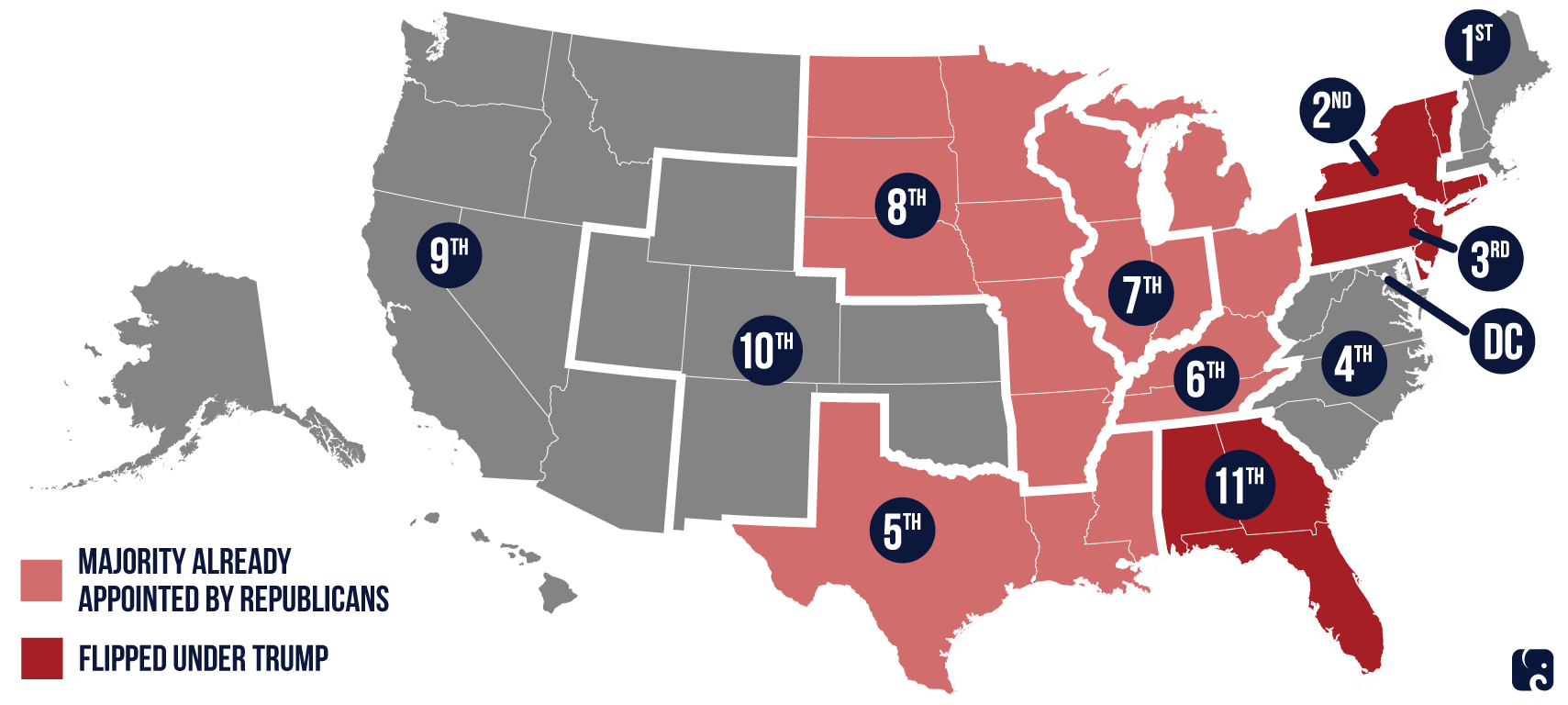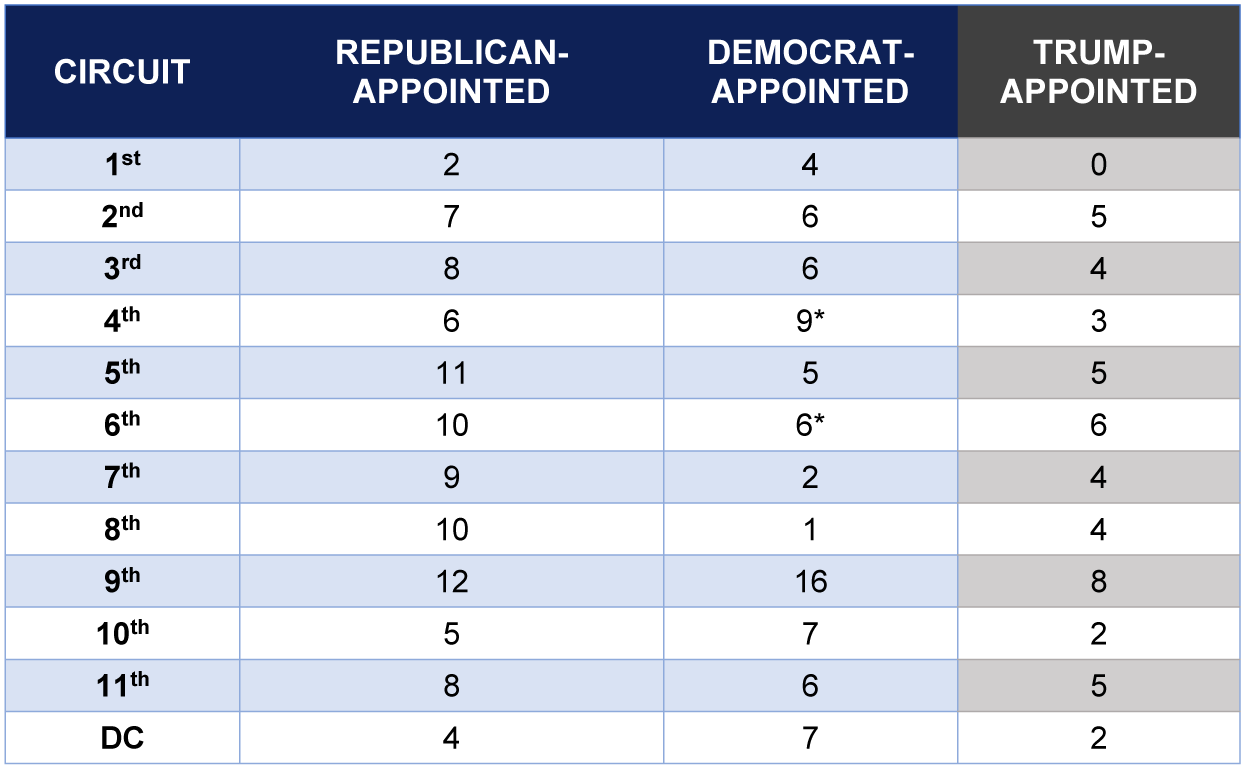Flipping Circuit Courts
KEY TAKEAWAYS
- During the Trump administration, the Senate has confirmed 48 nominees to circuit court judgeships.
- Those confirmations have flipped control of three of the 12 geographically defined circuits: the 2nd, 3rd, and 11th.
- Having a majority of Republican appointees in a circuit creates new opportunities to overturn flawed rulings.
As of December 9, there are 48 judges named by President Trump among the nation’s 179 authorized circuit court judgeships: nearly 27%. These confirmations have flipped three of the 12 circuits – the 2nd, 3rd, and 11th – establishing a majority of Republican-appointed active judges on those courts. There were already Republican-appointed majorities in the 5th, 6th, 7th, and 8th circuits. Creating a Republican-appointed majority of judges on circuit courts increases the likelihood of conservative rulings on the most important cases.
Federal Circuits Flipped Under President Trump

The 12 geographically defined U.S. circuit courts have the final say in the vast majority of federal cases; the Supreme Court reviews less than 1% of circuit court decisions. The Supreme Court might wait a decade or longer before accepting and issuing a significant ruling on a case of national importance. Circuit courts are constantly addressing all areas of law, refining the legal doctrines that effectively draw the boundaries on constitutional rights, major legislation, and criminal justice.
why circuit court flips matter
Increasing the number of Republican-appointed circuit judges increases the chances of Republican-appointed judges hearing a given case. Flipping the court’s majority also increases the chances of conservative rulings in cases reheard by all the judges of that circuit – so-called en banc rehearings. While relatively few cases are reheard en banc, they tend to be important ones.
When a case is appealed to a circuit court, three judges from the circuit are randomly chosen to hear the case and vote on the appeal. While litigants can attempt to appeal the circuit court’s decision to the Supreme Court, they can also petition the circuit court to rehear the case en banc. This rehearing is essentially a do-over of the appeal before all the active judges, not just the three-judge panel. In some circuits, senior judges – semi-retired judges who voluntarily hear some cases – can sit on the en banc panel if they were part of the original three-judge panel. Each circuit has its own rules on when to grant en banc rehearings, but generally the case must either be necessary to maintain uniformity of the circuit court’s decisions or present a “question of exceptional importance.”
Current Circuit Court Composition (as of December 9)

* Includes a judge appointed by President George W. Bush who was originally nominated by President Clinton.
This is where circuit court flipping can make a crucial difference. The decision whether to rehear a case en banc can be just as contentious as the decision in the underlying case. For example, the D.C. Circuit recently denied a petition for a rehearing en banc of a case challenging a congressional subpoena of President Trump’s accounting firm. Three of the four active Republican-appointed judges on the circuit court dissented from the denial, but they were outvoted by the rest of the circuit, including seven Democrat-appointed judges.
By contrast, the 6th Circuit – which has 10 Republican-appointed judges and six Democrat appointees – reheard a major Establishment Clause case en banc and reversed the original ruling. The three-judge panel had held that a county board of commissioners violated the Establishment Clause by opening public meetings with a prayer. The full court reversed that ruling.
Next Article Previous Article
